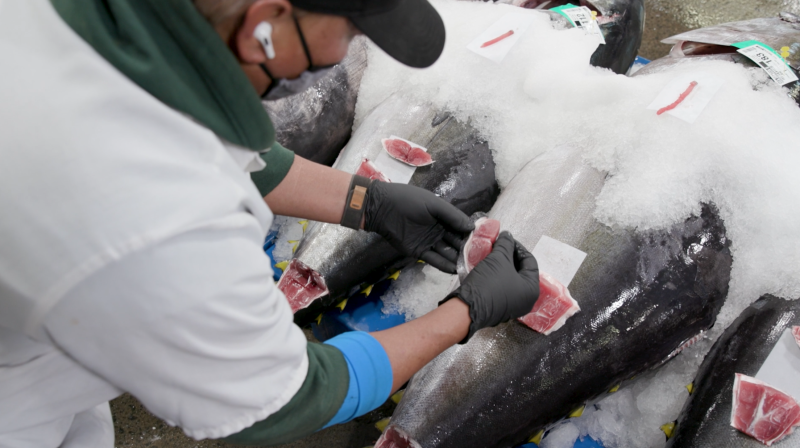The Pacific Islands have a long history and deep connection with the ocean and all it provides. Sustainable seafood is key to the health and well-being of both the people and the economy. The fishing and seafood industry in Hawaiʻi supports thousands of jobs and generates more than $1 billion in sales each year. This video tracks the path fish caught in the Hawaiʻi longline fishery, such as yellowfin tuna and swordfish, takes from the ocean to your plate—in the form of poke bowls, sushi, and other delicious meals.
The fleet efficiently distributes its harvest to the local seafood community—while retaining its premium quality—through the Honolulu Fish Auction. The auction is the anchor for the commercial fishing industry; it starts between midnight and 1 a.m. each day, when boats begin unloading. Hundreds of fish are carefully inspected to ensure quality and then displayed on the refrigerated auction block, and bidding begins at 5:30 a.m. Restaurants, retailers, and wholesalers bid on seafood that they know will be both fresh and high quality.
Fortunately for fans of U.S. seafood, thriving and resilient seafood communities—like the Hawaiʻi longline fishery—is the goal of NOAA Fisheries’ National Seafood Strategy.
